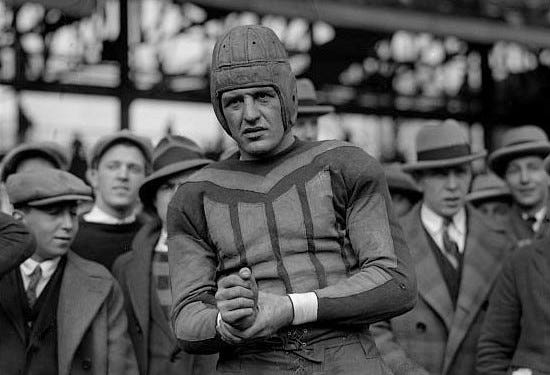Brain Bucket: Daze of Future Past
Part 4 in a series on the American game of war
The first protective headgear for football players appeared in the 1890s. Annapolis midshipman Joseph M. Reeves, who would go on to become the father of the aircraft carrier, is credited as the first player to wear one because he was told he risked death or “instant insanity” if he took another blow to the head while playing football. …
Keep reading with a 7-day free trial
Subscribe to Polemology Positions to keep reading this post and get 7 days of free access to the full post archives.


